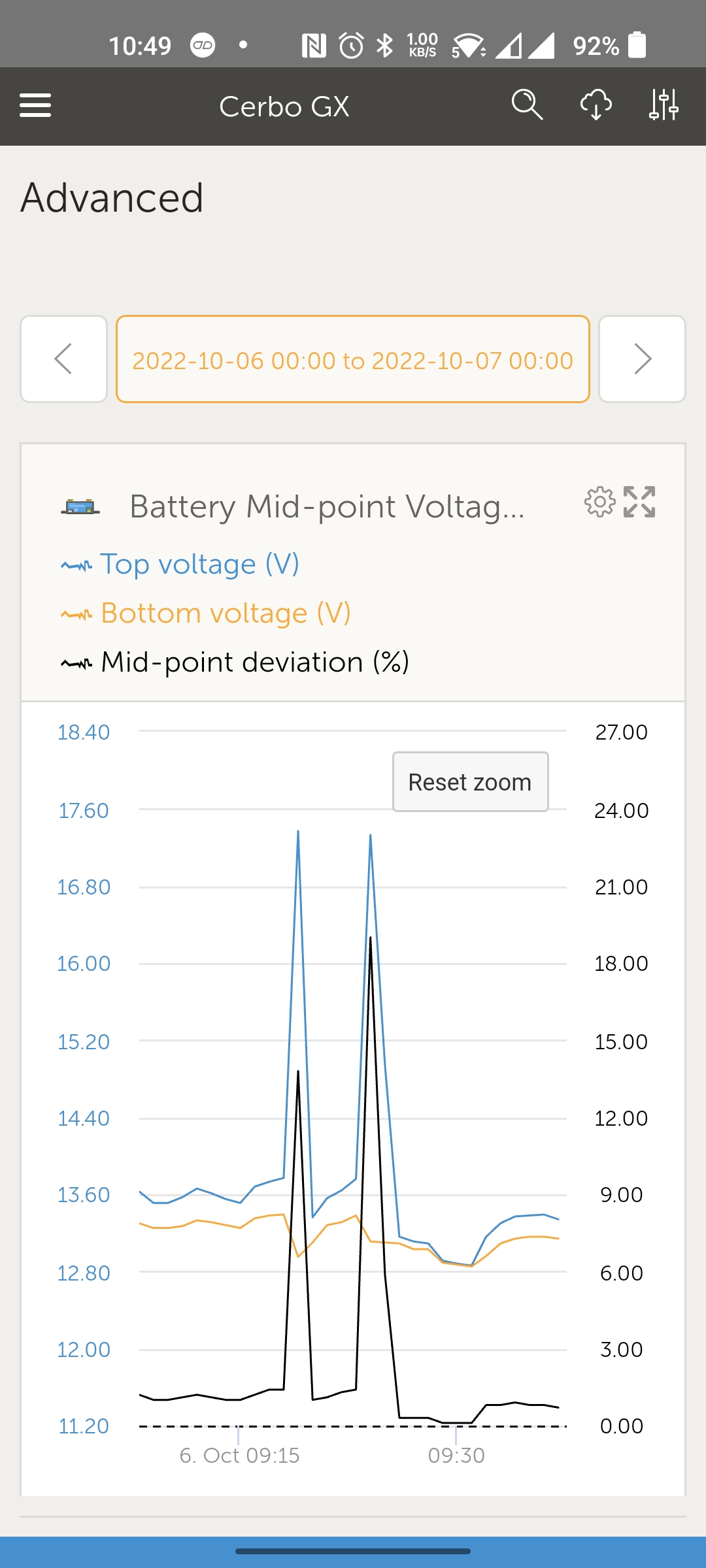Hi all,
My setup:
- 8x Leoch DT126 6V 240Ah in serial/parallel for 24V 480Ah (with HA02 energy transfer battery equalisers on each series string)
- SmartShunt 500A
- 2x MPPT 100/30
- Cerbo GX
I am seeing very high top section voltage spikes (around 17V) during periods of more intense sun (therefore higher charge currents). This leads to sudden very large mid-point deviations (around 15-20%), which results in a mid-point deviation alarm (threshold 2.0%) and the Cerbo GX cutting off the MPPT charge current temporarily, during which time the top section voltage drops and the mid-point alarm clears. This pattern then repeats every 30 or so seconds.
This is best explained by a screenshot from VRM. As you can see, the bottom section voltage is steady, but the top is spiking very high.

I first noticed this issue when both MPPT's were online at the same time, therefore generating twice the charge current of one. If I disable one of the MPPT's, then I do not see the spikes. Presumably this is due to the charge currents being lower.
To avoid the issue for now, I have reduced the maximum charge current of both MPPT's to 10A each, therefore maximum potential charge current of 20A, however obviously this limits my charging capacity. Previously I was seeing charge currents of 20+ Amps and then the voltage spikes would manifest.
What am I missing here? Why I am seeing these top section voltage spikes? They are clearly "not right" and I worry if I left the setup in this way I would damage my batteries. Is my charge current too high? If I base maximum charge current on 10% of the C20 battery bank capacity then I should be looking at about 48A as an appropriate charge current.
Here's a link to my system schematic https://1drv.ms/b/s!AqotUnsPzM2bsjg9ka0I5fuoRy6S
Standing by to provide further information. Many thanks as always.
